Tord Johan Carl Ekelöf [1] (born 12 September 1945 in Uppsala, Sweden) is a Swedish professor of particle physics at Uppsala University.

Tord Johan Carl Ekelöf [1] (born 12 September 1945 in Uppsala, Sweden) is a Swedish professor of particle physics at Uppsala University.

Ekelöf is the son of Per Olof Ekelöf and Marianne (Hesser) Ekelöf. He graduated in 1964 from the Cathedral School in Uppsala. Ekelöf became a bachelor of philosophy in 1966, a master's engineer in 1968 and obtained his PhD in 1972, [2] all at Uppsala University.
Having obtained his PhD, under the supervision of Sven Kullander, Ekelöf spent several years at the European Organization for Nuclear Research (CERN) in Geneva; first as research fellow from 1972 to 1975, then as a research associate from 1977 to 1979 and finally as a staff physicist from 1979 to 1983.
In the years 1983 to 1988, Ekelöf moved on to a position as researcher financed by the Swedish Research Council before he again became affiliated to CERN as a research associate from 1988 to 1990.
In 1990 he became a senior lecturer at Uppsala University and eventually full professor in 1998.
Throughout his career, Ekelöf has been active in experiments at the particle physics laboratory CERN in Geneva, Switzerland. He has participated in many different collaborations, including ATLAS and DELPHI, and authored a large number of scientific articles. [3]
Ekelöf has contributed towards the establishment of the Synchrotron-Light for Experimental Science and Applications in the Middle East. [4]
In 2009, he was awarded the Björkénska Prize, a prestigious scientific award from Uppsala University. [5]

DESY, short for Deutsches Elektronen-Synchrotron, is a national research centre for fundamental science located in Hamburg and Zeuthen near Berlin in Germany. It operates particle accelerators used to investigate the structure, dynamics and function of matter, and conducts a broad spectrum of interdisciplinary scientific research in four main areas: particle and high energy physics; photon science; astroparticle physics; and the development, construction and operation of particle accelerators. Its name refers to its first project, an electron synchrotron. DESY is publicly financed by the Federal Republic of Germany and the Federal States of Hamburg and Brandenburg and is a member of the Helmholtz Association.

The Royal Swedish Academy of Sciences is one of the royal academies of Sweden. Founded on 2 June 1739, it is an independent, non-governmental scientific organization that takes special responsibility for promoting natural sciences and mathematics and strengthening their influence in society, whilst endeavouring to promote the exchange of ideas between various disciplines.
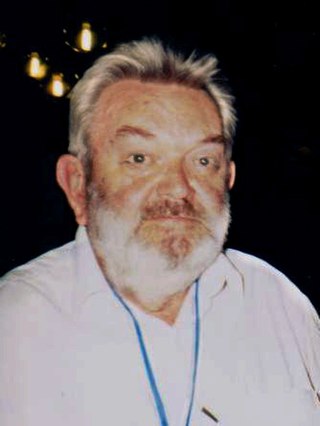
Martinus Justinus Godefriedus "Tini" Veltman was a Dutch theoretical physicist. He shared the 1999 Nobel Prize in physics with his former PhD student Gerardus 't Hooft for their work on particle theory.
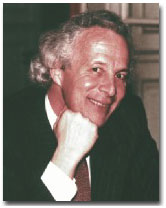
Thomas John Ypsilantis was an American physicist of Greek descent. Ypsilantis was known for the co-discovery of the antiproton in 1955, along with Owen Chamberlain, Emilio Segrè, and Clyde Wiegand. Following this work, he moved to CERN to develop Cherenkov radiation detectors for use in particle physics.

Gabriele Veneziano is an Italian theoretical physicist widely considered the father of string theory. He has conducted most of his scientific activities at CERN in Geneva, Switzerland, and held the Chair of Elementary Particles, Gravitation and Cosmology at the Collège de France in Paris from 2004 to 2013, until the age of retirement there.

Jonathan Richard Ellis is a British theoretical physicist who is currently Clerk Maxwell Professor of Theoretical Physics at King's College London.

Stockholms nation is a student society and one of thirteen nations at Uppsala University. The nation has its origins in the mid-17th century and regards 1649 as its official date of foundation, although this is uncertain. A document in the archives mentions students enrolled in the nation in 1649, but this is a copy of an original that was lost in a fire in 1702, and the nation is mentioned in the protocols of the consistory (board) of the university from 1656 as having been in existence for three years, which would put the foundation date at about 1653.
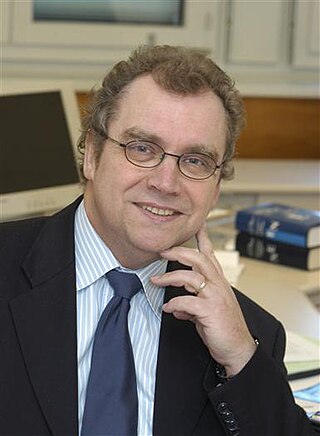
Prof. dr. Joseph Johannus (Jos) Engelen, a Dutch physicist, was Chairman of the Netherlands Organisation for Scientific Research (NWO) from January 2009 to October 2016.
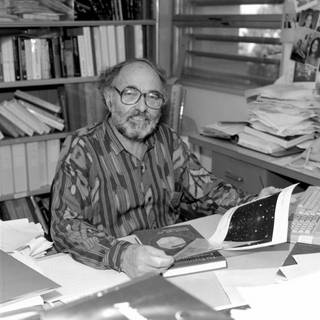
Gerson Goldhaber was a German-born American particle physicist and astrophysicist. He was one of the discoverers of the J/ψ meson which confirmed the existence of the charm quark. He worked at Lawrence Berkeley National Laboratory with the Supernova Cosmology Project, and was a professor of physics at the University of California, Berkeley as well as a professor at Berkeley's graduate school in astrophysics.

Herwig Franz Schopper is a German experimental physicist. He was the director general of CERN from 1981 to 1988.

The Synchrotron-Light for Experimental Science and Applications in the Middle East (SESAME) is an independent laboratory located in Allan in the Balqa governorate of Jordan, created under the auspices of UNESCO on 30 May 2002.

The L3 experiment was one of the four large detectors on the Large Electron–Positron Collider (LEP). The detector was designed to look for the physics of the Standard Model and beyond. It started up in 1989 and stopped taking data in November 2000 to make room for construction of the Large Hadron Collider (LHC). Now, the ALICE detector sits in the cavern that L3 used to occupy, reusing L3's characteristic red octagonal magnet.

Johann Rafelski is a German-American theoretical physicist. He is a professor of physics at the University of Arizona in Tucson, guest scientist at CERN (Geneva), and has been LMU-Excellent Guest Professor at the Ludwig Maximilian University of Munich in Germany.
Sergio Fubini was an Italian theoretical physicist. He was one of the pioneers of string theory. He was engaged in peace activism in the Middle East.

Peter Jenni, is an experimental particle physicist working at CERN. He is best known as one of the "founding fathers" of the ATLAS experiment at the CERN Large Hadron Collider together with a few other colleagues. He acted as spokesperson of the ATLAS Collaboration until 2009. ATLAS is a world-wide collaboration which started in 1992 involving roughly 3,000 physicists at 183 institutions in 38 countries. Jenni was directly involved in the experimental work leading to the discoveries of the W and Z bosons in the 1980s and the Higgs boson in 2012. He is (co-)author of about 1000 publications in scientific journals.
Cecilia Jarlskog is a Swedish theoretical physicist, working mainly on elementary particle physics.
Emilio Picasso was an Italian physicist. He served as a researcher at CERN and was the project leaders for the LEP one of the largest particle accelerators ever constructed. Picasso was awarded the Legion of Honour from France and is also bearer of the Knight Grand Cross of the Italian Republic, Italy's highest civilian honor. When he passed, his hometown newspaper called it a moment of mourning for "the international scientific community and for Pisa."

Maria Fidecaro (1930-2023) was an Italian experimental physicist with a focus on particle physics. She has spent most of her career at CERN, where she after retirement had the status of honorary member of the personnel.

Emanuele Quercigh is an Italian particle physicist who works since 1964 at CERN, most known for the discovery of quark-gluon plasma (QGP). Quercigh moved as a child to Friuli with his mother and his younger brother after the early death of his father. Quercigh studied physics at the University of Milan in Italy, where he became assistant of professor Giuseppe Occhialini in 1959.
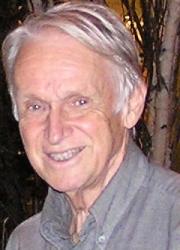
Torleif Erik Oskar Ericson is a Swedish nuclear theoretical physicist. He is known for 'Ericson fluctuations' and the 'Ericson-Ericson Lorentz-Lorenz effect'. His research has nurtured the link between nuclear and particle physics.